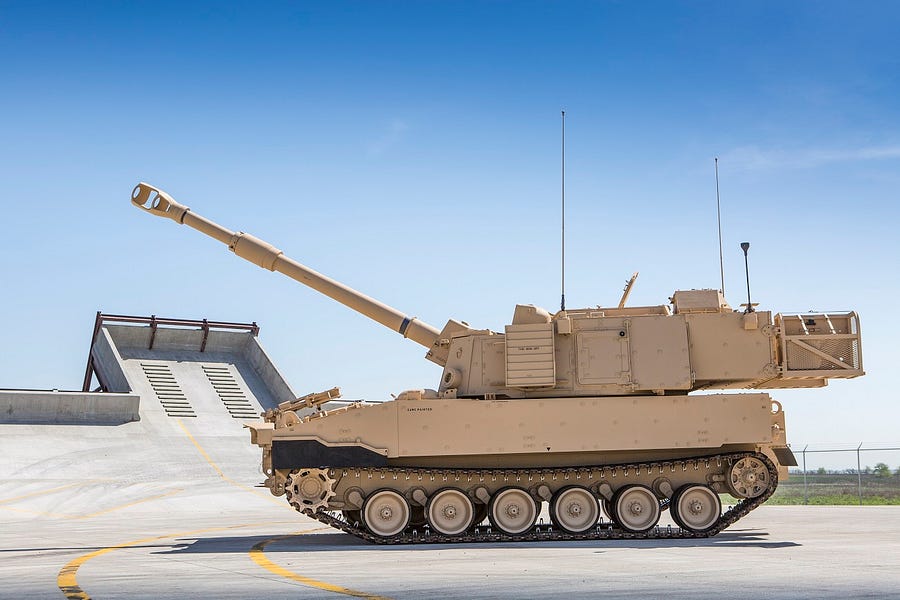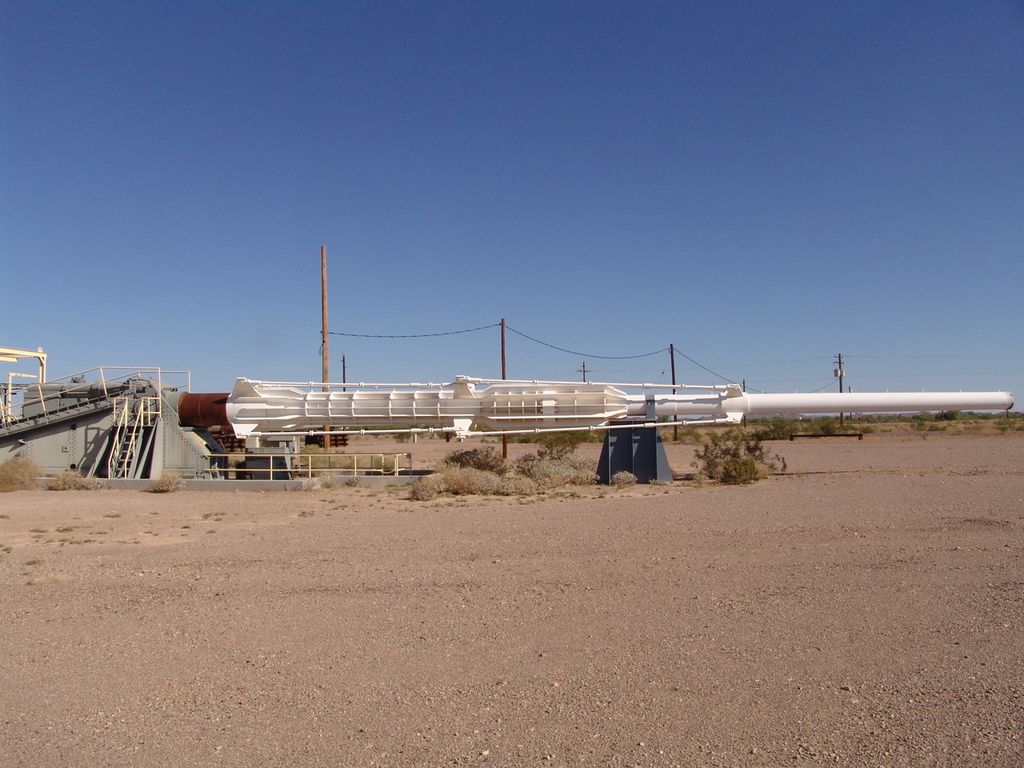
Posted on 08/12/2016 7:21:04 PM PDT by sukhoi-30mki
The U.S. Army in the coming years will build hundreds of new mobile howitzers, and largely, the project has been a success. Except there will be a problem if the self-propelled howitzers catch on fire.
The Paladin M109A7 PIM — the latest in America’s line of tracked artillery pieces — has an automated fire-suppression system known as an AFES. But during survivability tests, the AFES “did not protect the entire crew compartment” and that “howitzer crews are at increased fire risk” according to a report by the Pentagon’s Inspector General released in August.
Oil, lubricants and the heating system inside the Paladins are all potential fire hazards. And for obvious reasons, there is a risk of fire if the vehicles take a big enough blow. And that’s big trouble for the crews.
The Army will deploy its first PIMs in March 2017, and the howitzers feature a host of upgrades designed for the modern battlefield. But if the problem with the AFES isn’t fixed, “PIM program officials could deploy vehicles that endanger crews.”
All of that is true. Here’s another fact — the PIM is still safer than its predecessor Paladins, which have no automated fire suppression systems at all. Crews have to trust their lives to manual fire extinguishers carried on board.
However, it’s still big deal, especially considering the kind of lethal, massed and accurate artillery fire honed by the Russian army in eastern Ukraine — and which could land on American guns in a potential conflict.

Paladin M109A7 PIM. BAE Systems photo
The PIM is an evolutionary — not radical — upgrade of the Paladin. Outwardly, they look similar and have the same turret, except the PIM has a modified chassis based on the M-2 Bradley Fighting Vehicle.
The most important upgrade is the all-electric drive system in the turret and an overhaul of the engine to give the machine a lot more horsepower.
In short, this makes the new Paladin faster, more maneuverable and much easier to work on. Speed was a big problem in the 1992 and 2003 Iraq wars, when Paladins lagged behind the Army’s faster armored vehicles. And the PIM is a better protected from mines, as the chassis rests higher off the ground.
All that extra electrical juice in the Paladin is particularly useful for future upgrades regarding the fire-control systems and communications gear — a vital element of a modern artillery exchange.
It’s a long time coming for the U.S. Army’s artillery corps, which has struggled with questions of relevance in wars on insurgents. To be sure, howitzers have played an important — but reduced — role in America’s recent conflicts.
During the 2003 invasion of Iraq, America went to war with its smallest ratio of artillery to “maneuver” forces — those troops who close and engage the enemy — since the Spanish-American War, according to Armed Forces Journal.
In Afghanistan, artillery battalions often deployed with fewer guns than they were originally intended to field — and troops often found themselves doing other jobs.
Veterans of the Army’s artillery corps fretted over these trends. “So much for the vaunted King of Battle,” retired artillery officer Maj. Lance Boothe wrote in the May-June 2013 edition of Military Review.
In 2002’s Operation Anaconda, the U.S. clashed with hundreds of Taliban and Al Qaeda fighters without any large-caliber artillery. Yet with a more entrenched U.S. troop presence in the following years came an increasing reliance on big guns which — in places — fired relentlessly.
Case in point, one artillery battalion in Afghanistan’s mountainous and remote Kunar province lobbed around 25,000 rounds — including mortar rounds — in a year, according to the New York Times.
To fight the Islamic State, the Pentagon relies heavily on fixed-wing aircraft. But American artillery is still present on the ground.
The 26th Marine Expeditionary Unit has fired more than 2,000 artillery rounds at the Islamic State since deploying to Iraq. And the terrorists have shot back. One Marine from the unit was killed in a rocket strike on his artillery outpost near Makhmour on March 19.
Most disconcerting of all, America’s adversaries are not standing still. The Pentagon has closely watched massive amounts of Russian artillery deployed with brutal efficiency in support of the Kremlin’s proxies in Ukraine.
During one of Kiev’s worst defeats in August-September 2014, Russian heavy guns slaughtered hundreds of outgunned and surrounded Ukrainian volunteers at Ilovaisk. Russian-backed rebels have also made frequent use of small aerial drones for artillery reconnaissance.
In response, U.S. Marine expeditionary units now train with similar drones flying overhead to simulate enemy spotters.
In short, the U.S. military must prepare for a battlefield which involves lots of artillery. The Russians have also improved their skills in several conflicts in Chechnya and Georgia, and in Ukraine deployed advanced counter-battery radars which can detect the origin of incoming rounds, allowing them to quickly hit back at the source.
“We are outranged and outgunned by many potential adversaries,” U.S. Army Lt. Gen. H.R. McMaster told the Senate in April. “Our army in the future risks being too small to secure the nation.”
That’s a big reason why the Pentagon is rushing to get the upgraded Paladins in service — and it’s emblematic as to why fire suppression systems are critical. If the howitzers get hit, they’ll need them.
But the lack of a system that protects everyone inside is a shortcoming — and not the only one. The Army wants the howitzers to fire a maximum of 12 rounds within three minutes, but they’ve so far failed to accomplish this in tests, according to the Pentagon’s Inspector General.
Perhaps most worryingly, the PIMs keep the same 155-millimeter gun as with earlier Paladins. The cannon has a maximum range of 22 kilometers, ranging up to 30 kilometers with rocket-assisted rounds. That’s well below several foreign self-propelled guns — and Russia’s new 2S35 Koalitsiya-SV mobile gun could significantly outrange the PIM.
And in an artillery war, range is everything.
Must have missed that 1992 war..... Mine was 90 for Desert Shield and 91 for Desert Storm.....
Jagdpanther carried the 88.
“Have gun. Will travel.
Wire
Paladin
San Francisco....”
But if you really have a problem call Specter or an A-10. Damn I wish they had US Army painted on their fuselage!
ps
Paladin was a great series. I am showing my age.
That was the Crusader.
This is because the Paladin has a barrel which is 39 calibers long, the German Panzerhaubitze_2000 has a barrel which is 51.6 calibers.
I am certain that there are trade-offs, but in general a longer barrel means higher velocity and greater range.
Bull’s range improvements came at a huge loss of accuracy. As in “oops, dropped a shell on our guys” loss of accuracy.
>I don’t think the Stug had an 88 though. I think it was a variant of the Panther’s 75mm
Correct, but it was much more effective than the 88 due to it’s mobility.
>Of course, the German 88’s were still ripping up US tanks late in the war on the east side of the Rhine in 1945.
Depended a lot of the quality of the commander. Good generals always provided infantry support for the tanks and 88 where too big and immobile to resist infantry attacks. Patton’s forces in particular had no issues with them. Montgomery on the other hand got his armored spearhead shreaded during operation Goodwood because he didn’t provide any infantry support. The 88s where firing from concealed positions on both flanks.
Hans von Luck wrote book about his experiences during the war(fought on every major front) and he personally commanded the 88s at goodwood after his tanks where taken out by a massive air assault. I highly recommend his book.
>If we are ever in another ground war where hundreds or even thousands of guns are lobbing rounds at each other, our Air Force will have failed.
I keep hearing that SAMs are so advanced that neither side thinks that air forces will last longer than a week in a large war.
I love the stug. It’s very effective in my wargaming software.
Bull was working on increasing velocity, and on a very low budget. He was about a year from putting a projectile into orbit when the US pulled his funding to avoid the embarrassment of someone actually agenting to orbit on a shoestring before our very expensive rocket program.
There was no attempt to maintain accuracy, and he was working with a very poorly constructed gun. Read the HARP* final report. The gun was made by welding two naval rifles together end-to-end and stiffening the assembly with guy wires. A purpose built tube could have done much, much better.
And his sabots were made of plywood. Constructed in a carpentry shop. Now I know that a "sabot" was originally a wooden shoe, but this was a quick & dirty expedient. A sabot made of modern aerospace materials would have a lot more uniformity and better accuracy.
If he had not been murdered, I think his guns would have produce astonishing results.
* This HARP is not the same as Obama's refinance program with the same acronym. It stood for High Altitude Research Project.
It’s an OK article but typical narrow focus - probably written by some guy who makes fire extinguishing systems. The army and the Maines are stuck with the Fort Sill mentality: minimal budgets, labor-intensive firing and logistic systems, and solving precision issues with quarter-million-dollar-per-shot (and vulnerable) guided munitions.
The last big solution from Fort Sill was the 50 ton plus Crusader and they’ve been sulking ever since that pig was cancelled.
The future is highly mobile (fire on the move), very precise (advanced fire control, computer-controlled, MET-Sensing) ballistic systems with no gun crews. If the damn thing is hit and burns, you’ve only lost the machine.
The artillery gurus lost out when their existing systems were too heavy and too difficult to support in Afghanistan and the Iraq counterinsurgency. Now artillery is a backwater and the fossils are still teaching ancient history instead of current fire support.
It’s too bad the next war will be so fat paced that we won’t be able to teach new doctrine until it’s been over for a couple of years.
The first thing I noticed was how similar the chassis looks to the M 60 tank.
 The Martlet projectiles that Dr. Bull used were both free flight and rocket-assisted and were fully instrumented. Not exactly the flimsy effort you have described!
The Martlet projectiles that Dr. Bull used were both free flight and rocket-assisted and were fully instrumented. Not exactly the flimsy effort you have described!
I love all your posts. Planes! Tanks! Fighting ships! Cool stuff!
Just read your response a second time. Didn’t you know that the HARP barrel was reamed to be a smoothbore? There was never any reason to make system “accurate”: it was designed to fire almost vertically to attain the highest possible altitude, not to hit some target on the ground.
The HARP sent a 400 pound projectile to an altitude of 110 miles - hardly a Mickey Mouse operation!
The project was cancelled more because of friction between Canada and our government over Vietnam than by the insidious machinations of the Missile Lobby.
Reds the card of the man/ a knight without armor in a savage land’’.
Effectively, his factory straddled the US-Canadian border, and he simply moved "product" from one end to the other, before shipping...
His 155 artillery piece had increased range (maybe around 20%) and accuracy. Might have had to use his shell shape design, too.
Disclaimer: Opinions posted on Free Republic are those of the individual posters and do not necessarily represent the opinion of Free Republic or its management. All materials posted herein are protected by copyright law and the exemption for fair use of copyrighted works.